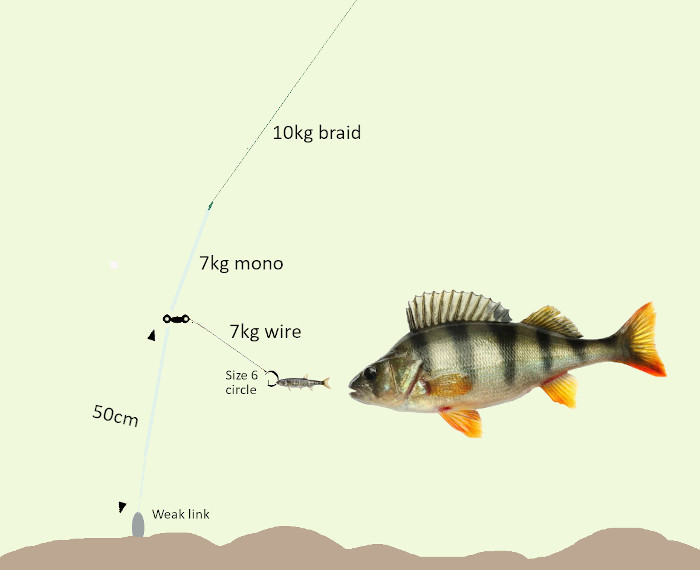 '
'Information Page.
Circle hooks.
Not much fishing lately, twisted back gardening, weather wrong, tides wrong, etc. So here's an update on my use of circle hooks:-
DO CIRCLE-HOOKS CATCH MORE FISH?
Circle-hooks are an ancient design. In recent years, when they were found to increase commercial (long-line) catches of sea fish, they have been modified and improved. They are now widely available, and I’ve been using these hooks, for much of my predator angling (salt and freshwater), for years now. When I first mentioned this (decades ago – time flies!), in books and articles, I had a good deal of correspondence from interested anglers regarding the pros and cons of their use.
Rod and line anglers, using traditional J hooks, are able to strike bites and hook the culprits. Circle-hooks, in contrast, designed as they are for static long lines where the fish ‘hook themselves’, require no sharp-strike. In fact, a gentle tightening of the line (the fish often do it for you) is by far the most effective way to secure biting fish. So, understandably, much of the discussion centred on whether, for rod fishers, circle-hooks would catch less (or more) fish than J hooks.
Billy Edwards and Sean O’Sullivan, both experienced anglers, wrote to me that they were doubtful whether the benefits of circle-hooks, which are clearly evident on static long lines, would be so great for hand-held, rod fishing.
Initially I had exactly the same doubts. I was certainly well aware that a hook on a long-line may not be the same thing as a hook on rod and line. As noted above, when using circle-hooks the fish more or less have to hook themselves. In contrast, if the angler holds the rod, waits for bites and strikes effectively (as I have always tried to do), then the circle-hook may lose its advantage. However, many of the modern, sea-angling approaches (distance casting, match fishing, up-tiding, etc.) rely on the fish hooking themselves against the resistance of a grip lead or fixed weight of some sort. This, to my mind, is almost the same as a hook fished on a long-line. So, at least for such sit-and-wait tactics, the improved hooking power shown by circle-hooks should be a huge advantage.
DO CIRCLE-HOOKS INJURE LESS FISH?
There is another thing to consider. Even for the alert, rod-holding, angler, and whether or not circle-hooks are better fish catchers, one thing is certain (and my own bass and pike fishing results have convinced me of this), you will deeply hook a lot less fish by using circle-hooks. Now, anything that helps propagate the 'caring, conservation-minded, angler' image these days must be worth trying.
Think about it. Freshwater anglers in the UK wish to return almost all their fish in mint condition (with the possible exception of some trout and salmon). In the case of sea anglers, who may keep some larger and more desirable fish to eat, one of the strongest arguments for angling (as opposed to commercial netting and set lining) is that anglers are able to return unwanted species or undersized specimens to the sea alive and well. Many studies have now shown that deeply hooked fish (whatever the hook type used) are the ones most likely to be injured or to die.
WHAT ARE THE FACTS
Clearly, if the use of circle-hooks does result in less mortality and trauma of returned fish, and still gives better or equal catches for anglers, it would be in all our best interests to use them when it is appropriate. To get to grips with these problems scientist have been working hard to establish the facts. Here are a few examples -
A Spanish sport fishery was examined to study the effect of hook size and type. The main catch was a smallish fish called the ‘derbio’ (a bit like our scad), which is a common catch in recreational fisheries around the Balearic Islands (Western Mediterranean). Very few hooked fish died over-all, but many (85%) of the ones deeply hooked died within two hours. The location in which the hook penetrated was the main cause of death. Perhaps surprisingly, the smallest hooks (sizes 14 and 12) caused more deaths than the larger ones (sizes 10, 8 and 6). Significantly, NO deep-hooking or mortality was observed when using circle-hooks.
In 2006, in California, another study was made of the survival of a popular angler’s fish, the ‘white sea-bass’. The effectiveness of offset-circle-hooks was compared with J-type hooks. The fish caught were 43–57 cm in length, and netted ‘bass’ were used as a ‘control’. Researchers recorded where, in the body, the fish were hooked and how hook location affected survival for 90 days after release.
The results showed that the circle-hooks penetrated the lip region more frequently (73%) than did J-type hooks (41%) and confirmed that hook location directly affected mortality. As with the derbio study, all fish deaths involved hook damage to the gut. The fish that died always did so within a few days after release. It was found better to leave deep hooks in place than trying to remove them. Interestingly, in this study angler success rates were equally good with both hook types.
In a second Mediterranean study the performance of circle-hooks was tested in a mixed-species, recreational, boat fishery. Again, the effects of the circle-hooks on hooking injury, fish size and catch rates were compared with J hooks.
For the two most frequently-caught species, the annular sea bream and the rainbow wrasse, the deep-hooking rate was more than halved by the use of circle-hooks. Once more, the anglers caught just as many fish as when using J hooks. The average size of the fish caught, and the unhooking time were not affected.
Most of this science involved fairly small fish but, these days, circle-hooks are also used for many big-game, species, in attempts to reduce mortality of the catch (the fish are generally tagged and released). In one study, off Florida, the performance of two types of circle-hooks and a similar-sized ‘J’ hook were compared when recreational live-bait fishing for Atlantic sailfish.
A total of 766 sailfish were caught when assessing hook performance. The scientists also considered the effect of drop-back-time - the length of time before tightening into a taking fish. This is of interest to me because I have to decide when to tighten into my pike, bass, etc. when they take the bait. In the sailfish study four drop-back intervals were examined (0–5, 6–10, 11–15 and more than15 seconds).
Hook performance was assessed in terms of proportions of successful catch, undesirable hook locations, bleeding events and physical hook damage on released fish. As it turned out the traditionally-shaped circle-hook had the greatest conservation benefit for survival after release. In addition, this was the only hook type tested that performed well during every drop-back interval.
Conversely, J hooks resulted in almost twice as many badly hooked fish, and fish released in poor condition, this was particularly bad when using long drop-back intervals. Non-traditional circle-hooks had performance results intermediate to the other hook types. So, choice of hook type can significantly change the amount of hook damage to fish.
Another point which has become clear to me over the years, is that some species of fish are more susceptible to lip hooking than others. I have now tried circle-hooks extensively when using live fish baits for pike, bass, perch and chub. I’ve also used them when free-lined, dead-bait fishing for bass and wobbling dead fish for pike. Of course, as in any form of angling, I miss some bites, but usually the circle-hooks appear to be very efficient.
There are still lots of ifs and buts regarding circle-hooks. Some of these were discussed in ‘The Second Wave’, written with my pal Steve Pitts. However, there is no doubt that mortality is consistently lower for circle-hooks than for J hooks and it seems to me that I hook just as many or more fish when using circle-hooks. Here are a few examples -
An Australian study on snapper involved 60,000 baited hooks on set lines. In this case the circle-hooks caught almost 60% more snapper than the J jooks. In addition, tying the hooks with a snell knot gave a further increase in catches. Interestingly, the circle-hooks took no fish under 30cm long while 47 (15%) of the catch on the J hooks were undersized ones.
In another study, with 75 anglers using a wide range of hook patterns, about 2000 sea bream were landed and released. Virtually all mouth-hooked fish survived but many more J-hooks were swallowed than circle-hooks. Using larger hooks also reduced the frequency of gut hooking, so big circle-hooks were the best.
With regard to species. My own correspondents have suggested that circle-hooks are excellent for mouth-hooking lesser spotted dogfish but give no advantages to avoid gut hooking when used for thornback rays or coalfish.
In complete contrast to the previous examples, a longline survey was conducted off Greenland, comparing traditional 12/0 J hook to three versions of a new 14/0 circle-hook. In this case catches on the traditional circle-hooks were 36% greater.
As far as I am concerned, now that quite a few years of circle-hook use have been and gone, my bass and pike fishing results have convinced me that I catch just as many fish and deeply hook a lot less of them by using good sized (4/0 to 8/0) circle-hooks. In addition, having also tried hook sizes 4 to 6 for perch and chub with a good deal of success, I’ve now caught lots of accidental, lip-hooked pike on them.
Perch livebait tackle
 '
'Paternostered minnow
 '
'Perch on circle hook (wire trace)
 '
'Large perch on circle hook (wire trace)
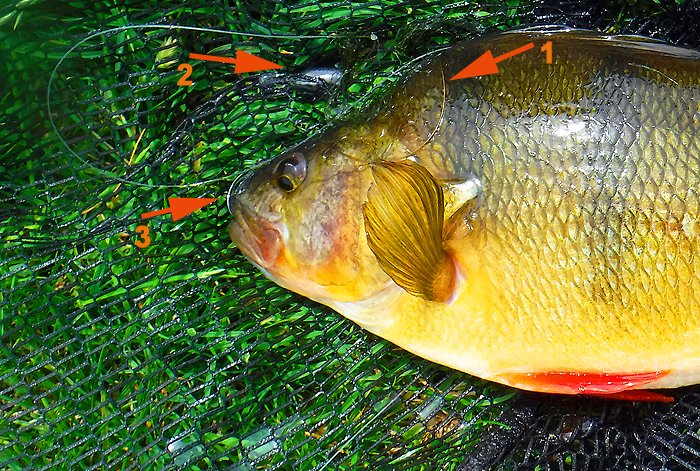 '
'Live minnows
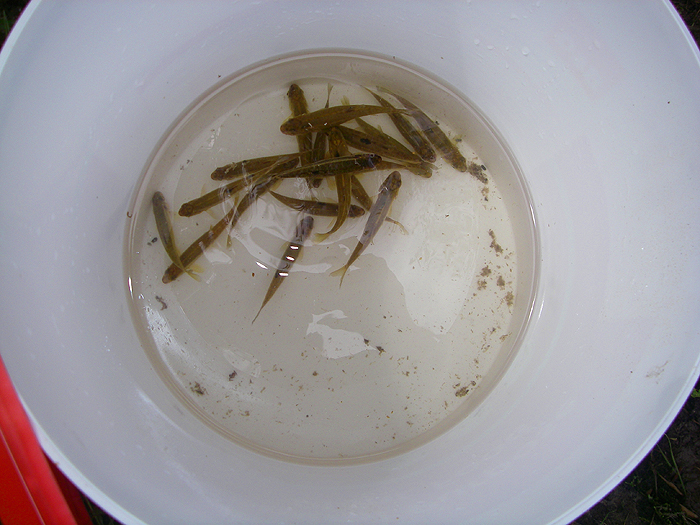 '
'Chub on circle hook (wire trace)
 '
'Pike on circle hook
 '
'Mackerel live bait
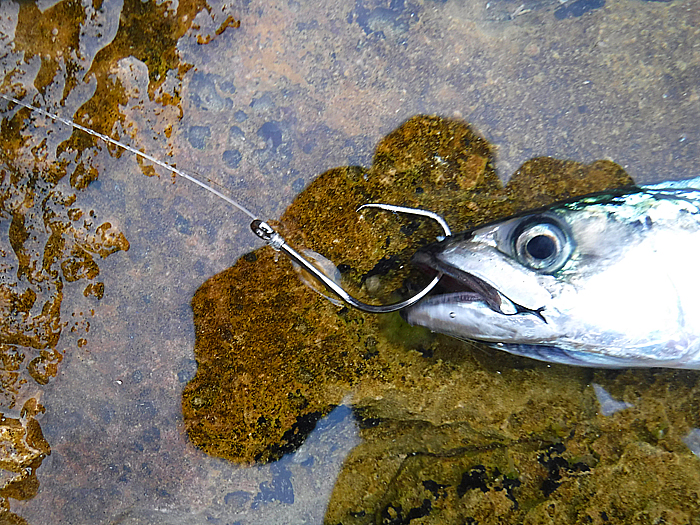 '
'Bass on circle hook (livebait)
 '
'Mackerel head and shoulders
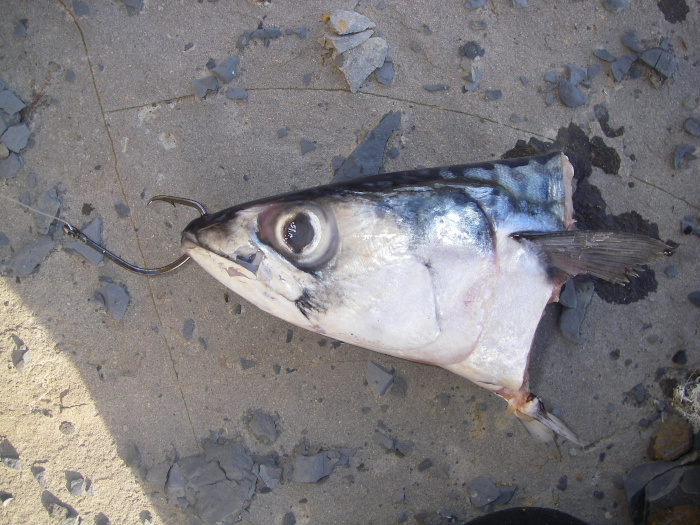 '
'Mackerel fillet bait
 '
'Bass on circle hook (deadbait)
 '
'Bass on circle hook (deadbait)
 '
'